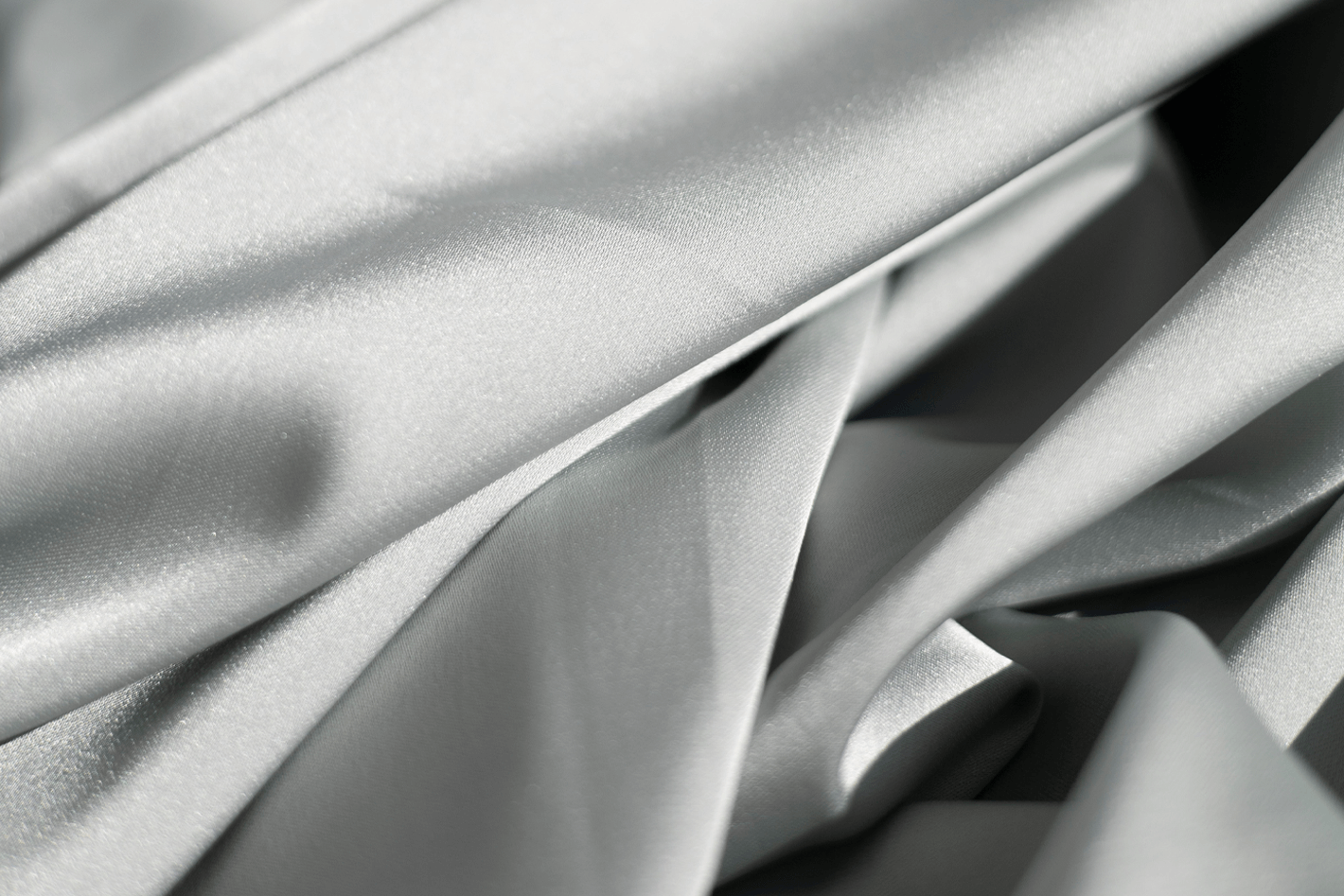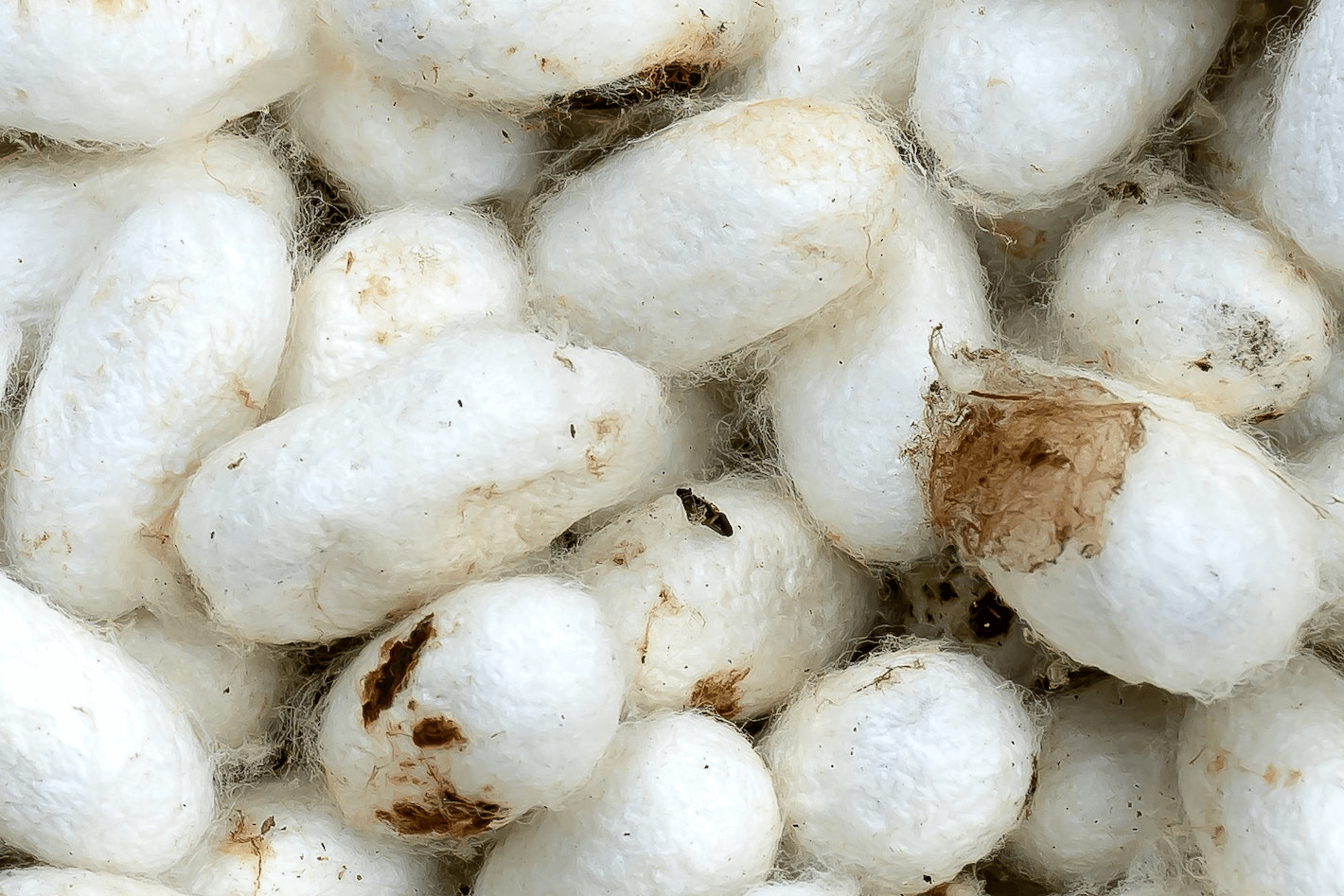What is mulberry silk?
Mulberry silk is silk made from silkworms that exclusively eat mulberry leaves. Mulberry silk is considered to be the highest quality silk you can buy.
Mulberry is a sustainable and nutrient rich food source for the Bombyx mori moth and the fibres produced from this limited diet are known to be the longest fibres, the strongest fibres and the most uniform in terms of fibre colour.
The unique properties of these silk fibres make the softest and smoothest silk fabrics. In addition to producing luxurious fabrics, mulberry silk is hypoallergenic and antibacterial due to the sericin protein contained in the fibres.
Sericin is mould and mite resistant and is renowned for its anti-aging properties when used in skincare products.

Different types of silk
There are many different types of silk and from these silks, a variety of different fabrics can be produced. Organza, chiffon, charmeuse, crepe de chine, velvet and silk brocade are all made with silk fibres and distinguished by the weave and weft of the threads used.
Sea silk
This type of silk is made from a mollusc and is the only sea-based silk available. It is incredibly rare and as such is seriously expensive. It is produced by the Pinna nobilis, or noble pen shell mollusc, which produces these chestnut brown fibres to anchor themselves to the sea floor.
Eri silk
Known as a ‘peace silk’, Eri silk is a kind of wild silk harvested in Assam, Indian. The pupae in the cocoons of the Samia rucini silkworms are allowed to mature and fly away, meaning that no insects are harmed when this silk is harvested. Eri silk is known for its thermal properties and is a great insulator. Its texture is not as luxurious as mulberry silk and is more similar to wool fibres.
Tussar silk
Tasar silk is made from Antheraea mylitta moths and is coarser than mulberry silk making it perfect for upholstery fabrics. It has a naturally copper hue which makes it harder to dye but this natural silk is thought to be stronger than mulberry silk, making it better for medical uses.
Muga silk
Muga is a type of wild silk produced in Assam, India. Muga silk is the silk fibres made by silkworms that feed on aromatic Som and Sualu leaves which produce naturally golden fibres that are known for their strength and glossy

What is momme silk?
Momme (mm) refers to the weight measurement of silk, similar to the thread count of cotton. All silk has a momme count and thicker, heavier, more densely woven silks will have a higher momme count.
See the examples below to demonstrate different momme counts across different types of silk.
Silk pillowcases and other silk bedding will typically range from 19 momme to 22 momme silk. The difference between 19 and 22 momme is the thickness and weight of the silk fabric.
19 momme silk pillowcases and sheets will feel soft and smooth, but 20 momme and 22 momme silk pillowcases will feel more luxurious and sumptuous, be heavier and thicker.
Fabric | Weight | Momme Count |
Raw silk | Heavyweight | 30 – 40 momme |
Charmeuse | Mid/heavyweight | 12 – 30 momme |
Chiffon | Midweight | 6 – 8 momme |
Organza | Lightweight | 4 – 6 momme |
Gauze | Lightweight | 3 – 5 momme |
What is the difference between satin and silk?
Silk fabric is made from natural silk fibres whereas satin is a combination of manmade fibres woven together to make a fabric.
Whilst both satin and silk produce a shimmery finish, silk is glossy on both sides of the fabric whereas satin has a dull side.
The other main difference is the cost. Silk is time consuming and costly to produce, making it a much higher priced fabric compared to satin.
Satin prices will vary depending on which synthetic fibres are used to make it. For the same reasons satin will come in different thicknesses and varying levels of quality.
Silk is a more delicate material to clean and maintain. It can shrink if not washed carefully. Satin on the other hand can be machine washed and is easier to look after as it is a form of plastic.
Is satin harming you?
Due to silk being a natural fibre, it is healthy for your skin. Because satin is often made of polyester (a form of plastic), it means that your body will be slowly absorbing plastic over time which is potentially harmful.
Find out in more detail about the silk vs satin pillowcase argument. For more information in general on silk, see our Silk FAQ to learn more.
